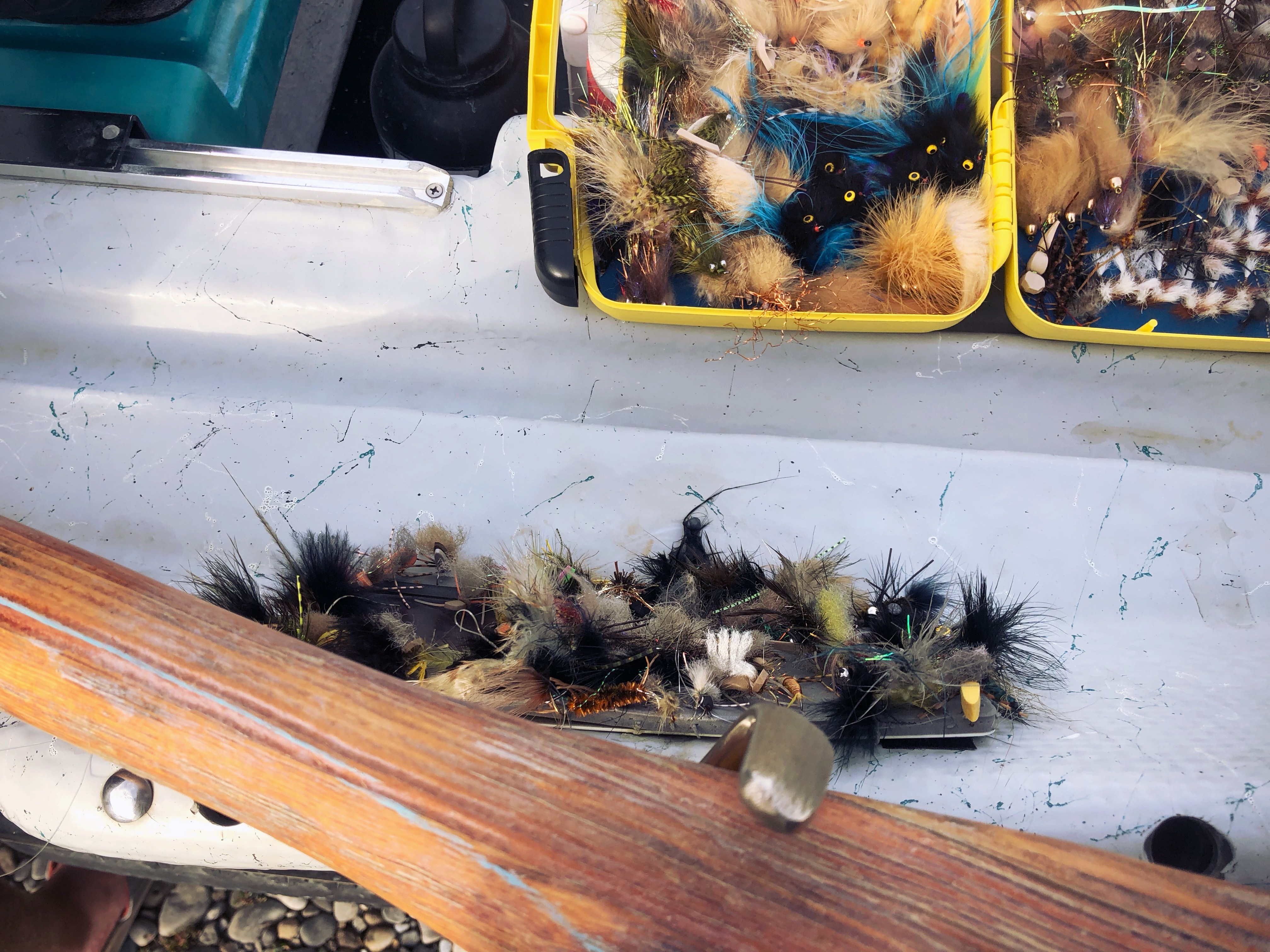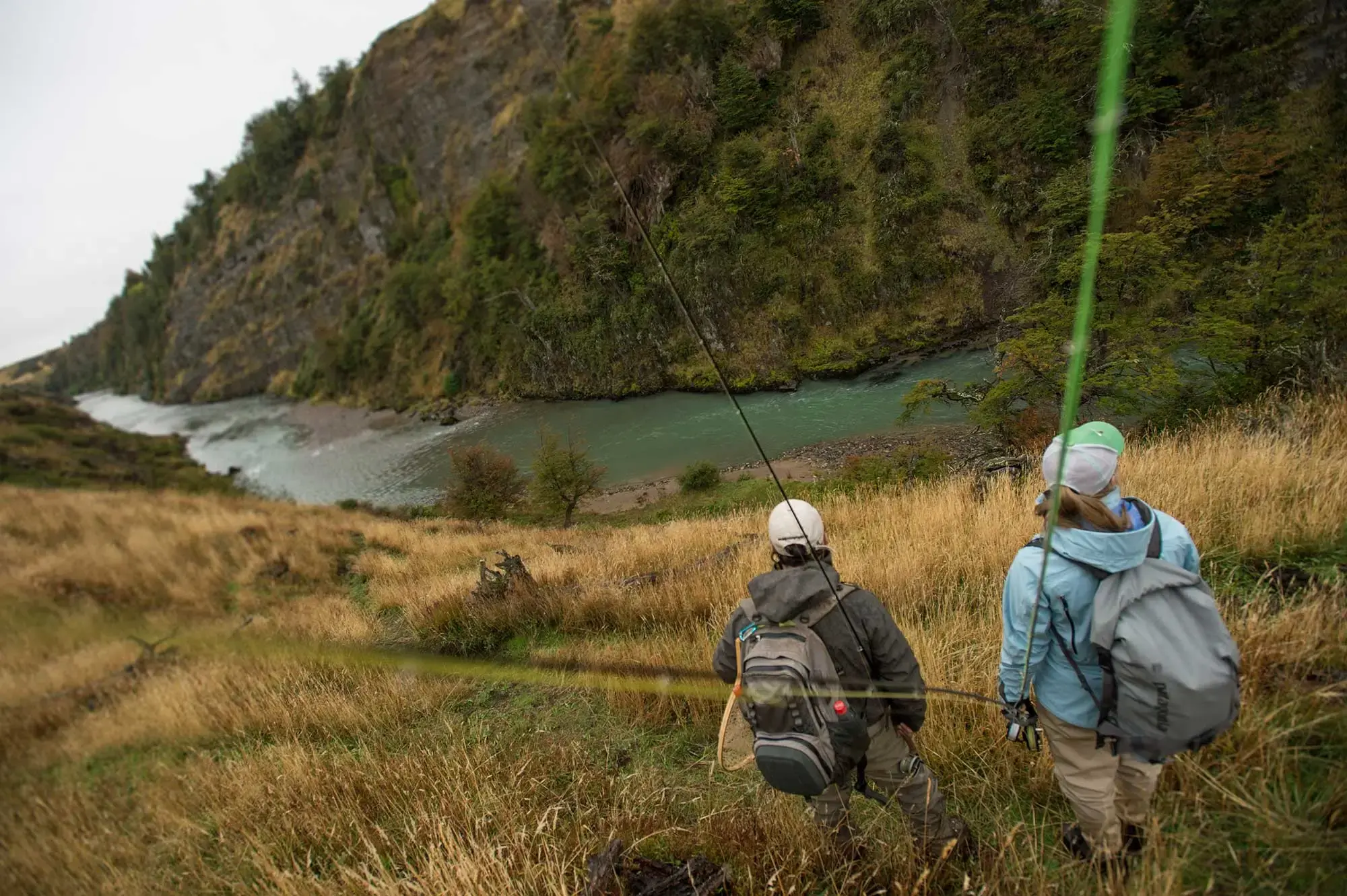The Tao of Two-foot Trout

The Tao of Two-foot Trout
If you practice fly fishing long enough, as the old cliche goes, most anglers will evolve their skills along a similar continuum: in the beginning, you’ll want to catch any fish; as you develop more experience, you’ll want to catch lots of fish; and, ultimately, when you get to the final stages, you’ll only want to catch the biggest, wildest fish–like the ones nailed to the fly shop walls in sepia photos.
So, how does one consistently go about finding, hooking and landing the largest fish in the river?
Here are some waypoints to shorten the learning curve, although you could easily write a small book on this topic.
Be a predator
Finding fish–this seems like the easy part, right? Buy a few kiss-and-tell fishing magazines, download some new fishy geo-tracking app, or scroll through your social media feed for all the amateur guides posting their daily “slab reports” near such-and-such bridge or rock outcropping in the background…
Actually, this is the hardest part of the mission. Big, wild fish don’t get that way by being stupid. I’ve heard the “fish have a small brain” (so don’t worry) line of thinking for a few decades, and it’s patently idiotic. These are big, wild creatures, wired and evolved to avoid you, predators and loud, ignorant approaches.
Spend all day floating the such-and-such slab factory river, cranking the Turtlebox, slinging pink bobbers in a neon-green raft, and somehow, you can’t buy a decent fish? Approach the river like a predator, not a tourist.
Do you really think the best fishing guides in New Zealand, chasing ten-pound browns, are crawling the river banks in full camo by accident?
Think like a fish
Ask a hundred fishing guides on a hundred different rivers where to find the biggest fish, you’ll probably get a hundred different answers. Every river is slightly, or vastly, different and these idiosyncrasies create endless opportunities to scramble the fish-finding abacus.
“Every big fish lives within ten feet of the bank…” is an old fish-finding adage. This may be true on Montana’s Madison River, where the freestone geology and high water volume press fish against any available banks, islands, or bridge abutments, but further south on sections of Idaho’s Henry's Fork, the shallower depth and decreased water velocity provide ample opportunities for bigger fish to carouse the entire river, and they often do. Understanding the physical characteristics of a watershed often will reveal the clues to unlocking the mystery.
In general, any fish, not just the big ones, require a few important things to survive: consistent sources of food, cover from predators (if there are any) and opportunities to conserve energy and store fat for the lean winter months. Think about parts of the river that deliver and/or collect food, provide protection (logs, banks, large rocks) from predators (raptors, minks, bigger fish) and create cushions or breaks in the forceful current. Find all three of these characteristics with the right depth, and bigger fish can be around.
Once you begin to understand the kind of places that might provide suitable conditions to house big fish, now your job is to see if anyone is home.
Look in front of rocks and bailouts. They’re almost never right behind the rock. – Kirk Deeter
Location, obviously, matters. Are there big trout around? Are you willing to put in effort and explore the weird hours, unappealing conditions and times of year big fish may be more available? – Tim Romano
Prospecting
Finding fish takes a lot of work and observation, and the more ground you cover, the more fish you might run into. But there’s a balance–you don’t want to move too quickly and miss the clues; you don’t want to move too slowly, and fish the same water for six hours. Both approaches are unproductive.
Cover water, fish here and there, look for clues like feeding fish, birds and insects. Also, vary your approach and work on your skills–nymph the likely looking zones with different flies (big, small), throw some dries if you see feeding fish, rip a streamer on the walk back. Often on your first trips to such-and-such river, you’re simply looking for clues that you’ll collect for later.
How do you radically speed up this learning curve? Fish with friends, if they’re any good, who know the water and have had proven success. Hire a good guide–it might be the best money you’ll ever spend. Get in a boat and see fifteen miles of water, instead of two. You’re trying to understand and interact with a complex natural environment and more information is always useful.
Slow way down. Really watch the water, examine your casting and presentation. Oh yeah, throw streamers you idiots. – Tim Romano
Have a plan
Hooking and landing big fish is an art form–the more you do it, the better you will become. But in the beginning, you’re going to lose a lot of fish. Over time, you’ll learn what works and what doesn’t. Why do guides land a lot of big fish? Because they’re coaches right next to you, helping correct all the things that can go wrong. They also carry big nets.
Sometimes, you hook big fish by accident, which is always fun, because no one knows how the story will play out–“drive by shootings” the guides on Colorado’s west slope like to call them. But more often than not, you will see the fish beforehand, feeding, cruising, doing what they like to do. You’ve stumbled onto a wild creature doing its thing without spooking it. Your first job is to observe its patterns, then make a plan to hook, fight and land the fish–how is it eating (slowly, rhythmically, erratically)? Where will it run when hooked? Where can you land and net the fish?
After finding a fish, watch them eat for five minutes, then you make a plan. – Kirk Deeter
I always play out the battle and know the landing zone before I make a cast. Can your friend back you up downstream with a big net? Little nets don’t land big fish. – Kirk Deeter
Taking a punch
So, you finally hooked the fish of a lifetime…what happens in the next handful of seconds will largely determine if you land the fish or not. Too much pressure? Too little? Is the fish headed for wood, rocks or mid-river? Did you get him on the reel? How much line is out? Are you controlling the fish, or is he controlling you?
There are often a lot of discussions about rod angles during fish fighting and getting the fish’s head up, which is all completely valid, but in my experience, this happens after the initial, and generally chaotic, hookup. You have to weather the initial storm first.
How does a big fish react after being hooked? You don’t really know until it happens, and that’s part of the fun and challenge. Some fish will head right back to the bank, rock or root wad where they live to break you off–your job is to stop them. Others will rip across the river and go airborne–your job is to control the line tension. In many ways, you’re just trying to “stay with” the fish in these early moments, while also understanding how much pressure and personal will you can exert.
Steer the fish and make them work. Low rod, side to side. Take the battle to the fish. Just because it’s big, don’t back off. You have to assert your will (smartly) more with bigger fish. People who just “hang on” don’t land very many. – Kirk Deeter
The little things
When my dad passed away a few years ago, I was handed down some of his old fly-fishing possessions: a Winston 8-foot 6-inch 5-weight, three-piece fly rod (one of the classic IM6 editions), a Hardy Ultralite Disc fly reel and a bunch of his fly boxes, loaded with circa, bygone patterns. To honor him, I spent a few seasons fishing only his equipment and flies. The fly rod needed some refurbishment, a new fly line for the Hardy and the fly lineup required a hook sharpener. Although most of the equipment was easily twenty years old, it was still completely functional.
The Winston IM6 rod blank is an extremely forgiving, medium-action fishing tool that can provide “give” and backbone when required, unlike most of today’s uber fast (stiff) rods that excel at fly delivery, but not really fish landing. The Ultralite Disc provides smooth line outtake and a heavier disc drag that can slow the rushes of big fish, if needed. The fly selection would be characterized today as humble, but utilitarian.
The point of explaining all of the above is to say, I’ve caught more big fish in the last few years than I’ve ever caught, with beat-up, twenty-year-old equipment. And maybe the lesson here is about approach, using your eyes and watching fish. It may also be true that when you’re compensating for old, broken down equipment, you may also be double and triple-checking your knots, leader abrasions and hook points. Regardless, a pound of prevention is also another easy way to put big fish in the net. Check your knots, leader for nicks, moss on your flies, hook points, ferrule connections, constantly.
Is this obsessive? Of course, that’s the point.
Electricity
Finally, do you have what it takes upstairs to believe big fish are there, even when you can’t see them, and that they can be caught. The “fishiest” anglers–the 10% who catch 90% of the season’s big fish–do so because they have acquired an unrelenting belief.
They know the fish are there; they know the fish can be caught. It’s not “if,” but “when.”
One of the Green River’s finest fly-fishing guides, Denny Breer from Dutch John, Utah, who’s no longer alive, believed a person’s energy or electricity “flowed down their arm, through the fly rod and to the fish when you’re fishing intently and with purpose…”
“…but when you turn your head away to fiddle with something, when you stop paying attention, you shut that electricity off.”
This is the closest thing I’ve heard to a scientific explanation for why “glass half full” anglers tend to lap the “half empty” demographic in terms of performance.
No one said this sport would be easy, or that it can be mastered in a weekend. Build your confidence one fish, one trip, at a time.
.svg)








